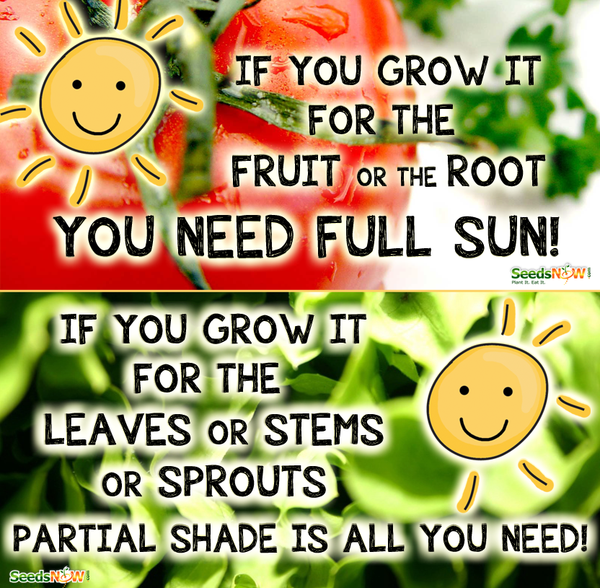Getting Started: Where Should the Garden Be?
← GO BACK TO GROW GUIDES
If you are gardening in a community garden, you may have no choice at all about where to garden – you get a plot, and that’s where your garden is.
If you do have a choice, your garden should be out in the open, fully exposed to the sun. Most vegetables, flowers, herbs, and fruits do best if they are not in the shade - but there are still a lot of varieties you can plant that tolerate partial shade.
the sun. Most vegetables, flowers, herbs, and fruits do best if they are not in the shade - but there are still a lot of varieties you can plant that tolerate partial shade.
You can even think outside the box and use shopping bags like the one pictured to the right. They make great planting containers and they're easy to move around. This container was used to grow some Kale.
One thing that's important to remember is that the roots of trees and shrubs also compete with your garden for water. If possible, your garden should be close to a source of water. Soil matters a lot – if possible, choose a place for your garden where the soil is deep, without rocks. If you want to, you can contact a local university extension service and have your soil tested for various properties important for agriculture.
If your soil is shallow or rocky, though, that’s o.k. – it can be improved. If you are near old housing (built before the 1970s), you may also want to have your soil tested for lead. Lead from paint can stay in soils for a long time and end up in your food. Exposure to lead is very harmful, especially for the brains of small children.
← GO BACK TO GROW GUIDES
If you are gardening in a community garden, you may have no choice at all about where to garden – you get a plot, and that’s where your garden is.
If you do have a choice, your garden should be out in the open, fully exposed to
 the sun. Most vegetables, flowers, herbs, and fruits do best if they are not in the shade - but there are still a lot of varieties you can plant that tolerate partial shade.
the sun. Most vegetables, flowers, herbs, and fruits do best if they are not in the shade - but there are still a lot of varieties you can plant that tolerate partial shade. You can even think outside the box and use shopping bags like the one pictured to the right. They make great planting containers and they're easy to move around. This container was used to grow some Kale.
THE RULE FOR A GREEN THUMB:
If you grow it for the fruit or the root, you need full sun.
If you grow it for the leaves, stems, or sprouts, partial shade is all you need.
If you grow it for the fruit or the root, you need full sun.
If you grow it for the leaves, stems, or sprouts, partial shade is all you need.
One thing that's important to remember is that the roots of trees and shrubs also compete with your garden for water. If possible, your garden should be close to a source of water. Soil matters a lot – if possible, choose a place for your garden where the soil is deep, without rocks. If you want to, you can contact a local university extension service and have your soil tested for various properties important for agriculture.
If your soil is shallow or rocky, though, that’s o.k. – it can be improved. If you are near old housing (built before the 1970s), you may also want to have your soil tested for lead. Lead from paint can stay in soils for a long time and end up in your food. Exposure to lead is very harmful, especially for the brains of small children.
← GO BACK TO GROW GUIDES
